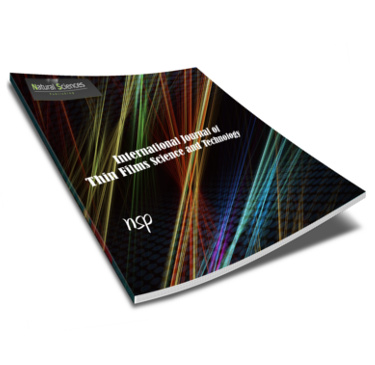International Journal of Thin Film Science and Technology

Abstract
Copper oxide thin films were deposited onto a glass substrate using Successive Ionic Layer Adsorption and Reaction (SILAR) method. The structural, optical, surface morphology, and antibacterial activities are studied. The structural studies revealed that the as-deposited and annealed film at different temperatures like 150 °C, 200 °C, and 250 °C. The preferential orientations of all films are (111) plane with the cubic system. The XRD patterns are well-matched with JCPDS card No: 05-0667. From the UV-vis-NIR studies, the transmittance and absorbance of the film are increased with the increase of annealing temperature. It can attain a maximum temperature of 250 °C. The energy bandgap of the film is calculated using Tauc’s plot. The bandgap of the film is varying from 2.48 eV to 2.19 eV corresponding to the annealing temperature. The antimicrobial assay was tested against Staphylococcus aureus. The zone of inhibition is significantly changed at the temperature of 250 °C (≈16 mm). The surface morphological studies showed that the needle- shaped grains play a crucial role in the antibacterial activity of the Cu2O films. From EDAX, the presence of elements Cu and O in the product was confirmed. Atomic force microscope study depicts that the surface of the film has closely packed nearly uniform-sized grains. From the TEM, the film is well oriented after annealing.
Recommended Citation
Dhanabalan, K.; Ravichandran, A.T.; A.Vasuhi; Chandramohan, R.; Karthick, P.; and Mantha, Srinivas
(2022)
"Effect of Annealing based on the Structural, Optical, Morphological and Antibacterial Activities of Copper Oxide Thin Films by SILAR Technique,"
International Journal of Thin Film Science and Technology: Vol. 11
:
Iss.
1
, PP -.
Available at:
https://digitalcommons.aaru.edu.jo/ijtfst/vol11/iss1/8

